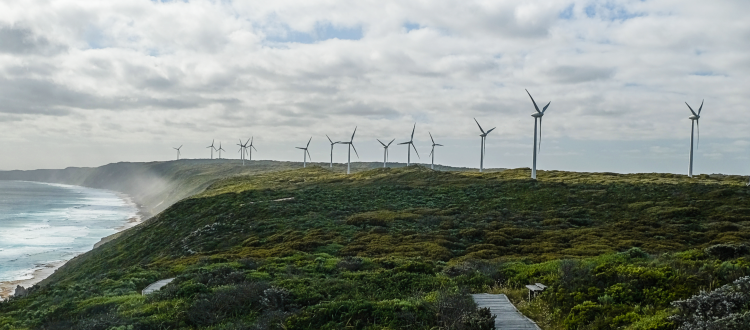Southern WA is known for its Mediterranean climate, with very hot and dry summers and most rainfall in winter.
But every decade since the 1970s, the region’s summertime maximum temperatures have risen, and winter rainfall has fallen. Winter rainfall in the Great Southern has already decreased 13% since 1968.
This trend is set to continue. Almost all climate models project a further drop in winter rainfall. The region already has very hot days in summer, from the heat brought from the desert’s easterly winds. As climate change worsens, these winds are projected to get more intense, bringing more heat.
Reduced rainfall driven by climate change and growing demand are placing pressure on existing groundwater sources that supply over 90% of drinking water to the Lower Great Southern Towns Water Supply Scheme.
Modelling predicts aquifer recharge in existing groundwater abstraction areas west of Albany will fall by up to 18 per cent by 2050, driven by an 18 per cent decline in winter rainfall over the same period.
Work to ensure the long-term security and sustainability of drinking water in Western Australia's Lower Great Southern is gathering pace, with planning underway for the region's next major water source.
Great Southern water supply
Steady population growth in coastal towns, the impact of climate change and improving resource recovery are driving our plans for the Great Southern.
The region has a number of local independent town water supply schemes. There are also 2 integrated networks – the Lower Great Southern Towns Water Supply Scheme (LGSTWSS), which supplies Albany, Mount Barker, Kendenup and nearby areas. The main source of water for the LGSTWSS is the Albany bore field.
The Great Southern Towns Water Supply Scheme (GSTWSS) supplies 44 towns in the region. Harris Dam is the main water source of GSTWSS and Stirling Dam is the alternative source.
Our plans to secure drinking water supplies
In recent years, we have worked on several strategies to help secure drinking water supplies:
In 2021, the LGSTWSS Scheme was expanded to include Denmark. It ensures the town no longer solely relies on surface water from its primary source, Quickup Dam.
We're investigating a new water source for the Lower Great Southern Towns Water Supply Scheme including groundwater sources in the Manypeaks and Angove areas and a possible seawater desalination plant at our existing South Coast Water Treatment Plant in Torndirrup.
Increasing water efficiency and water recycling
We’re committed to recycling as much of the Great Southern’s wastewater as possible. On average we recycle 70% of our wastewater flows for beneficial community re-use across the region. There is 100% re-use in Albany, Boddington, Kulin, Mt Barker, Tambellup, Walpole and Williams. The region’s recycling is contributing towards our statewide target of 35% by 2035.
In Albany, around 2,000 million litres of treated wastewater is used to irrigate an Albany tree farm each year. Over a million trees on the farm captures some 70,000 tonnes of carbon from the environment!
We can all help
Remember every drop of water counts and it can all add up to big savings. Find out what you can do to save water starting today.
Responding to climate change
Low rainfall coupled with ongoing hot and dry conditions have impacted on-farm storages, shire dams and Department of Water and Environmental Regulation strategic community water supplies. To secure water supplies in these areas we utilise water carting when needed and shire fixed standpipes.
Find out more
